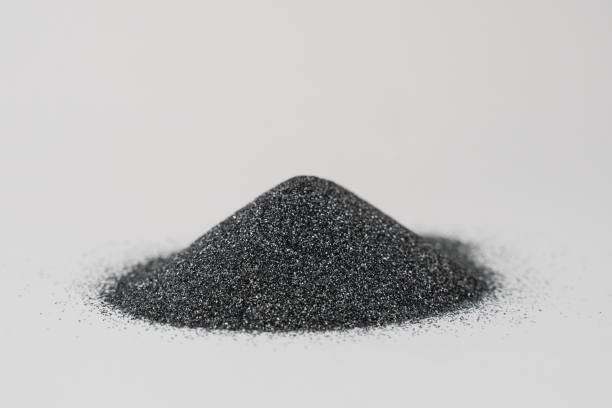
In the silicon carbide supply chain, substrates account for a major share of value, making up nearly 50% of total device cost. By contrast, silicon wafers typically represent no more than 10% of cost in silicon-based devices. The main reason for this disparity is the complexity of producing silicon carbide single crystals.
Why silicon carbide is difficult to produce
Unlike silicon, silicon carbide does not have a stable liquid phase at atmospheric pressure; it transitions between solid and gas. Silicon can be grown from the melt by vertical pulling, but silicon carbide, as a compound, cannot be produced by the conventional Czochralski method. At high temperature silicon carbide tends to sublimate directly from the solid to the gas phase.
Historical background
Production of silicon carbide single crystals began in 1885, when American chemist Edward Goodrich Acheson first obtained silicon carbide by heating a mixture of coke and silica (quartz sand, quartzite, etc.) in an electric furnace. That mixed-heating approach dominated silicon carbide production for a long time, but the resulting crystals often contained many impurities and were small, limiting their use mainly to abrasive applications.
In 1955, Lely at Philips Laboratories invented the sublimation growth method for silicon carbide, also known as physical vapor transport or PVT, enabling the preparation of higher-purity silicon carbide single crystals. That method uses a graphite crucible and silicon carbide powder as feedstock. A porous graphite region creates a central cavity; argon and hydrogen are introduced and the assembly is heated to about 2500°C so that the feedstock sublimates and single crystals grow on a seed placed in the cavity.
Main modern growth methods
- Physical vapor transport (PVT): PVT is currently the mainstream method for producing silicon carbide single crystals and is used by most large-scale SiC substrate manufacturers. The process begins with synthesis of feedstock: high-purity silicon powder and high-purity carbon powder are mixed at a specific ratio and reacted at temperatures above 2000°C in a reaction chamber. This step removes trace impurities adsorbed on particle surfaces and ensures a stoichiometric composition and particle size suitable for crystal growth. After crushing, sieving, and cleaning, high-purity silicon carbide powder meeting crystal growth standards is obtained. Each batch undergoes strict purity and particle size testing.
- High-temperature chemical vapor deposition (HTCVD): HTCVD is an advanced variant of traditional CVD and shares similarities with PVT. This method relies on silane (SiH4) and hydrocarbon gases (for example C2H4 or C3H8) as silicon and carbon sources. Gases enter the graphite crucible from below and react in a high-temperature zone at roughly 2100 to 2300°C, producing Si and SiC species that then deposit on a silicon carbide seed crystal above the crucible to form a single crystal.
- Liquid-phase methods: Liquid-phase techniques are a long-established route for silicon carbide crystal production. They were widely used in the 1960s and even surpassed PVT at one point. After PVT breakthroughs in the 1970s, liquid-phase approaches became less common. However, because PVT faces challenges in scaling to larger diameters and reducing cost, liquid-phase methods have regained attention.
Technical challenges and recent progress
Liquid-phase methods still face significant technical hurdles. A balance must be found between growth rate and crystal quality, since excessively fast growth can introduce defects or cause cracking. Graphite crucibles are subject to corrosion during growth, potentially destabilizing the growth environment. In addition, thermophysical parameters of the liquid phase under high-temperature conditions, such as solidus/liquidus points, surface tension, and viscosity, are not yet fully characterized, and these remain important research directions.
Outlook
Current silicon carbide crystal production efficiency is relatively low, directly affecting substrate cost and keeping prices high. As the supply chain matures and production scales up, crystal growth techniques continue to improve. Advances in liquid-phase methods offer new avenues for commercialization and potential cost reduction. Optimization and industrial adoption of these emerging techniques will be key factors in lowering SiC substrate costs over time.
 ALLPCB
ALLPCB





